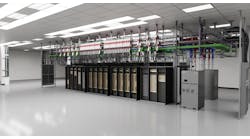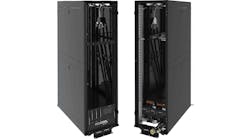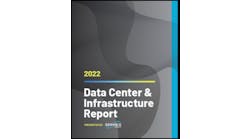Equinix is making waves in hyperscale computing with its xScale initiative, pre-leasing two entire data center buildings in Europe. Equinix has long been the global leader in colocation and interconnection services, and the strong results in its xScale business suggest it is also becoming a formidable player in the hyperscale market.
In its earnings call Thursday, Equinix reported that it had pre-leased the entire first building on its Dublin 5 campus to a major hyperscale provider, and finalized a deal after the close of the first quarter to pre-lease its entire London 11 data center in Slough.
“These two deals alone represent nearly 40 megawatts of capacity fully committed in advance of delivery,” said Charles Meyers, the CEO of Equinix. “On the xScale side of our business, we’re accelerating our pace and continue to make meaningful progress on our ambitious plans for 2021. With our xScale facilities hyperscale companies can add large footprint core deployments to their existing network and on-ramp footprints at Equinix.”
The spectacular growth of hyperscale tech companies like Google, Microsoft, Facebook and Amazon Web Services is reshaping the data center market. As larger volumes of data move across these hyperscale networks, proximity to major Internet intersections becomes more important. Equinix gained prominence by building highly-connected data centers in major business hubs, where networks could physically connect and exchange traffic.
The Evolution of Platform Equinix
For many years, Equinix stuck to its focus on “retail” colocation, in which tenants buy smaller amounts of space by the cabinet or cage. Meanwhile, developers like Digital Realty and CyrusOne leased larger data halls and entire buildings to single customers. The lines between these products have blurred over the years.
In 2017 Equinix announced its xScale initiative, allowing hyperscale companies to tap directly into its rich ecosystem of network connections as they move data around the globe.
Equinix initially said it would compete on deals for up to 5 megawatts of space, and emphasized that it was not “entering the hyperscale market.” It has since lined up joint ventures with Singapore sovereign wealth fund GIC to build 290 megawatts of hyperscale data center space in Europe and Asia. The JVs will support more than $3 billion in hyperscale capacity, and Equinix says several more are in the works.
Equinix isn’t thinking about 5 megawatt requirements anymore, either, as noted recently by Krupal Raval, the Managing Director of the xScale program. Raval said Equinix can provide “10, 20, or even 50 megawatts of power, all while meeting Equinix’s sustainability commitments.”
“Our xScale data centers are engineered to meet the technical, operational, and pricing requirements of hyperscale companies that require large amounts of space and power to support massive scaling across thousands of servers for cloud, big data analytics or storage tasks,” said Raval.
More xScale Joint Ventures in the Works
Joint ventures with investors are becoming an important tool for data center companies to fund growth, and provide a vehicle for investors like GIC to gain a foothold in the data center industry as it emerges as an important new asset class.
“We’re very pleased with the nature of our relationship with GIC,” said Meyers. “We think that we can continue to extend that (model) and have other JVs around the world. We’ve had great pre-leasing activity on the facilities that we put out there, I think there is an opportunity for us to increase the pace.”
“The xScale team under Krupal’s leadership is working really, really well with our JV partners, to make sure that we get the right returns,” said Equinix Chief Financial Officer Keith Taylor. “And we’re negotiating with the various hyperscalers to get a good long-term contract. Given the momentum that we’re seeing, you may see us do more of these than we originally anticipated.”
Equinix isn’t the only leading player focusing on interconnection as a magnet for hyperscale deals. Digital Realty’s strategy is built around data gravity – massive aggregation points for data that attracts applications, services and infrastructure. It has raised its interconnection game with acquisitions of Telx and Interxion and has announced plans to develop its own orchestration and fabric connectivity software.
It also has a slightly different vision for how Internet architecture will evolve, asserting that interconnection will move closer to giant storehouses of data, rather than being concentrated in network hubs in city centers.






